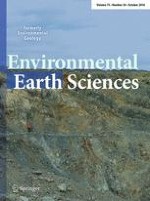01-10-2016 | Original Article
Landslide displacement prediction using discrete wavelet transform and extreme learning machine based on chaos theory
Published in: Environmental Earth Sciences | Issue 20/2016
Log inActivate our intelligent search to find suitable subject content or patents.
Select sections of text to find matching patents with Artificial Intelligence. powered by
Select sections of text to find additional relevant content using AI-assisted search. powered by
